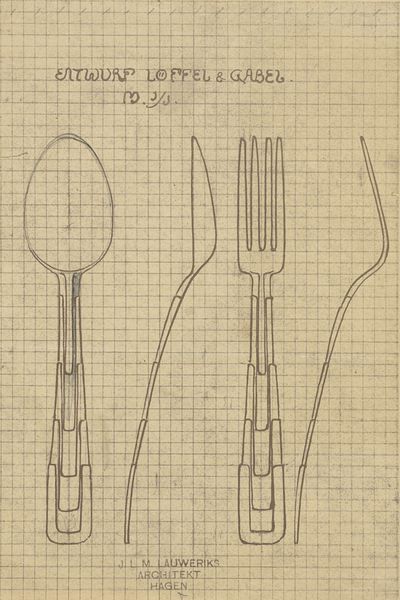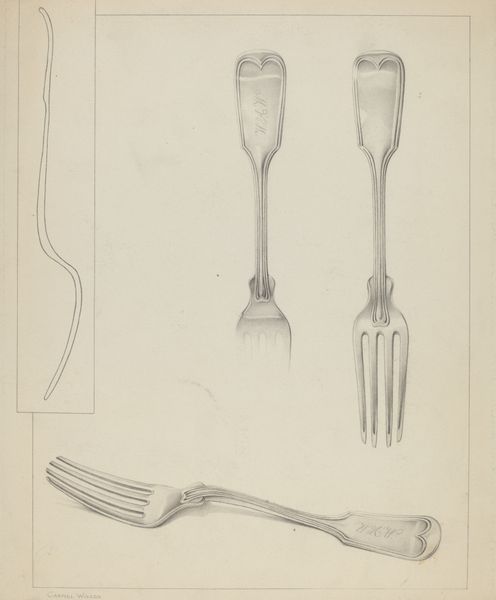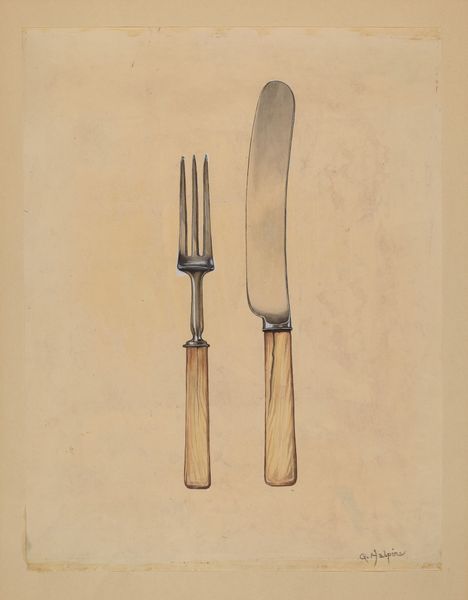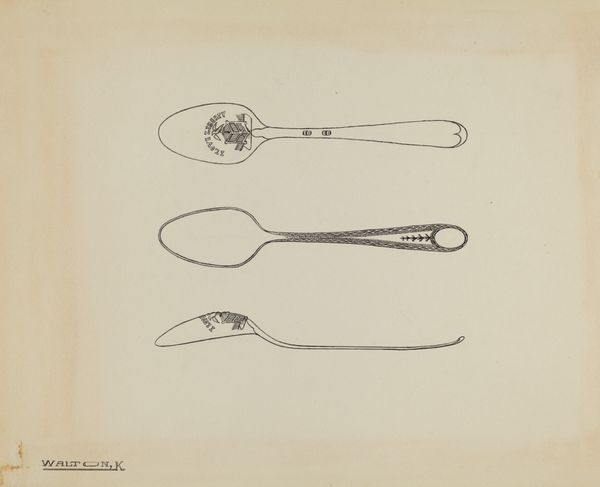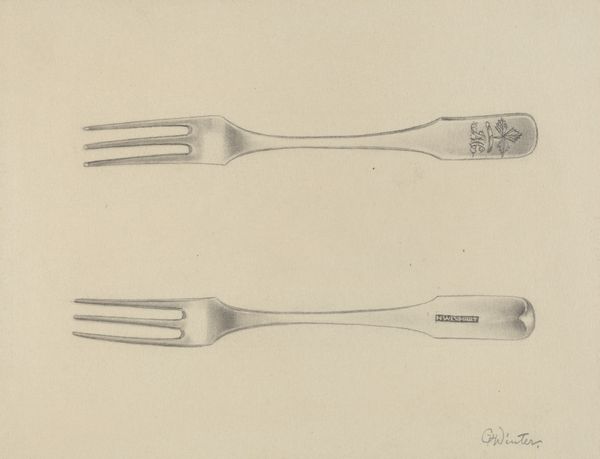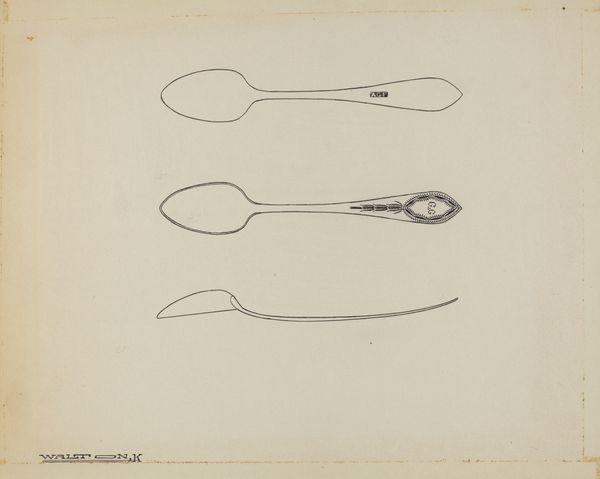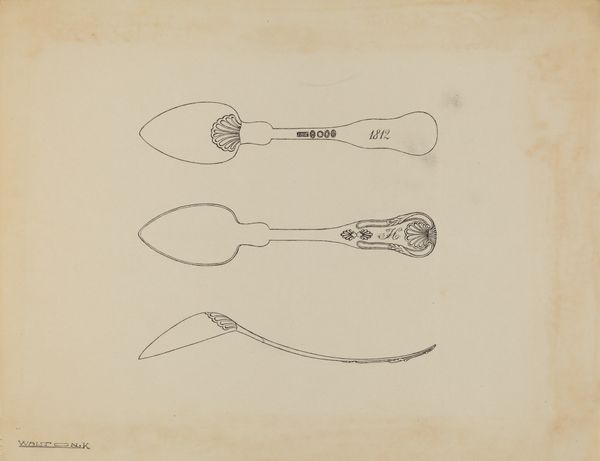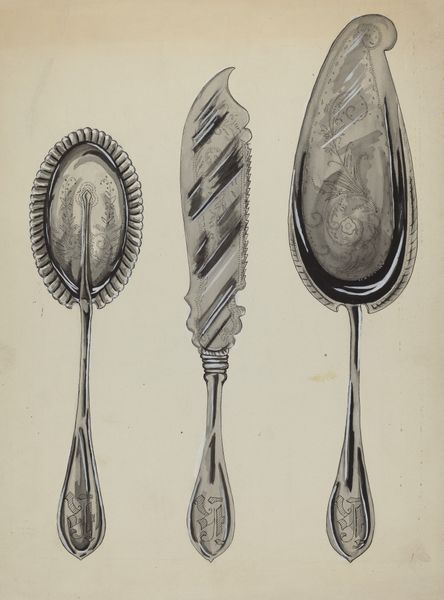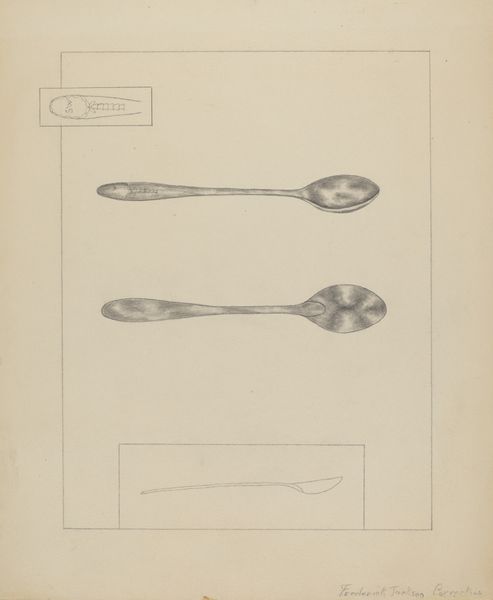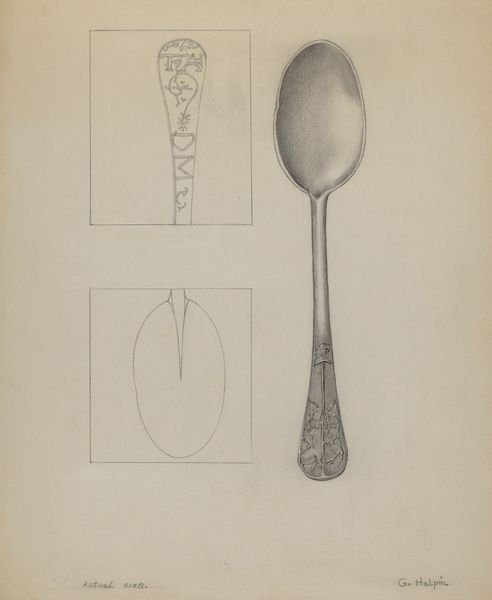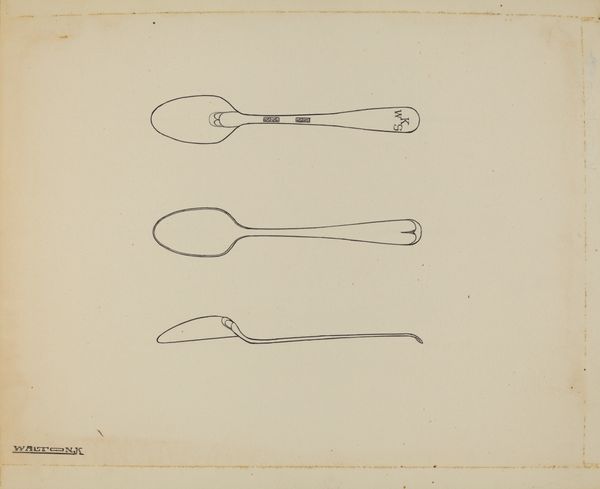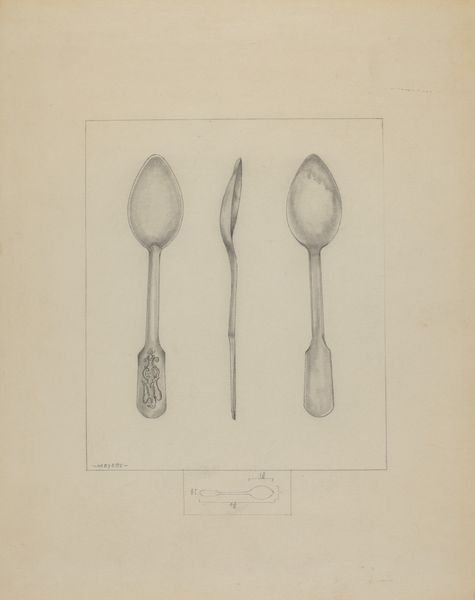
drawing, paper, ink
#
drawing
#
art-nouveau
#
paper
#
ink
#
geometric
Dimensions: height 367 mm, width 228 mm
Copyright: Rijks Museum: Open Domain
Editor: This is "Ontwerp voor een lepel en een vork," or "Design for a Spoon and Fork," by Mathieu Lauweriks, made between 1874 and 1932. It's an ink drawing on paper. There’s something so precise and architectural about the design; it feels like more than just a utensil sketch. What do you see in this piece? Curator: The grid immediately draws my attention. It's not merely a backdrop but integral to Lauweriks's process, highlighting the intersections between art, design, and architectural principles rooted in geometry. But consider also the social context. Who were these designs for? This era saw a rise in interest in functional design intended for broader consumption beyond the elite. How might these streamlined designs democratize access to aesthetically pleasing, yet practical, objects? Editor: That’s a great point; the grid *does* give it a sense of accessibility, like anyone could pick up the design. But who exactly *was* this intended for? Curator: I'd wager these were designed within a broader push of the Art Nouveau movement toward designs reflecting both the burgeoning sense of nationalism and cultural identity and an effort to move away from excessive ornamentation favored by the old aristocracy. Utensils are mundane objects, used daily; to apply such thoughtful design could indicate a utopian vision of how beauty might uplift daily life for everyone. It challenges us to question: who gets access to beauty, and how is that access distributed? What feelings does that consideration evoke? Editor: So it's about design as a vehicle for social change. Thinking about access to beauty… it makes me look at these simple designs as quietly radical. Curator: Precisely. Seeing them as more than functional objects opens up dialogues about the intent of the artist and also who they were designed to serve. It's a layered interpretation. Editor: That’s definitely given me a new way to look at it, considering design choices in terms of historical movements and social implications. Thanks!
Comments
No comments
Be the first to comment and join the conversation on the ultimate creative platform.
